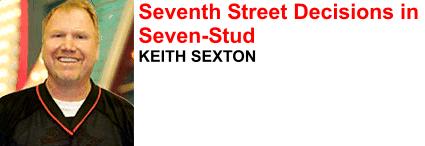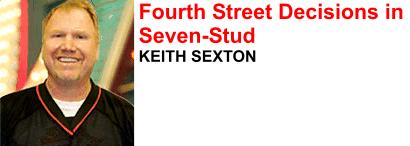Alan asked:
I have a question about middle pocket pairs in a No Limit Hold’em ring game. For example if I were dealt 99, would it be better for me to make a standard raise of about 4 times the big blind to limit the competition or would it be better for me to limp in and hope to spike a set?
Now lets assume there are three people in the pot with me and there is only one overcard. Should I bet 3/4 the pot for information or should I check and fold to any bet. With only one overcard, there is still a reasonable chance I could have the best hand, but I can’t take much heat with only a pair of 9s.
Another thing that is troublesome is the mini-raise. Lets say I have top-pair, top-kicker and bet 3/4 the pot against two opponents; one folds, and the other opponent raises the minimum amount. I am now getting 4.33 to 1 pot odds. From my experience, mini-raises are a sign of a strong hand that would have top pair dominated, and my opponent will most likely continue firing if I call a mini-raise. If I fold to a mini-raise, the table will notice that I folded to a mini-raise, and some players may be tempted to use the mini-raise as a bluffing tool. The player would be making money if his mini-raise bluff was successful more than 20 percent of the time. I do not want to portrayed as a player that is easy to push.
In this situation where I bet 3/4 the pot and face a mini-raise on my top pair, is it better for me to call the mini-raise to send a message that I can’t be bluffed cheaply or is it better to fold since I have information that my opponent most likely has me beat?
Hi Alan, thanks for the question!
Concerning the middle pocket pairs, it depends on a number of factors. If you’re under the gun and your table is not extremely tight preflop, raising 99 is probably a bad idea, especially if there is a good chance you’ll be re-raised.
However, if you’re in middle or late position and have a good chance to steal the blinds (and a lower chance to be reraised because fewer players are behind you yet to open) I like raising hands like 99 in the standard amount. You’ll want to do this not only because pocket pairs like 99 are strong enough to sometimes win unimproved in a shorthanded pot, but also because it adds a lot of deception to your opening range (people won’t be able to put you on a monster if you raise preflop with a variety of hands, and by raising 99, you might get more action on AA/KK later on).
Generally, deciding when to raise a middle pocket pair requires that you look at your position, whether your table is tight/aggressive, loose/passive, tight/passive, loose/aggressive etc., because you won’t want to be reraised very often, and you also need to check whether others have limped in front of you, as you’ll often prefer to raise 99 preflop only when it’s likely to be a shorthanded pot (although, that’s not a hard and fast rule – just something to consider).
When deciding whether to continue betting on the flop, you need to think about how many people you’re against (3 means it’s likely, but by no means certain, that someone has hit something better, 1 or 2 is much less likely, 4 or more is highly likely) and how likely it is that a limping player holds that overcard. If the overcard is the ten, you’re more likely ahead of the field than if it’s an ace (because fewer people limp/call with Tx than with Ax). Sometimes, you’ll also have to check for other considerations like possible draws – if there are a lot of draws out there, your 99 may be the best hand now but still a dog to be the best hand at the showdown, meaning you’re better off checking the flop and not committing a lot of chips in a poor spot.
Concerning the miniraise, you will have to try to think about what it could mean. Someone who miniraises could have two pair or a set, so think about all the combinations thereof and whether any of them make sense for your opponent to have given how things have gone so far. Also, consider whether they might be betting with a draw (so in other words, if there’s no draw, they’re either making a ridiculous bluff or they have a made hand). Usually you’ll be required to call a miniraise by the odds, but not if you think your opponent is more likely to have a set than two pair. Two pair you’ll have a lot more outs against than a set, where you’re drawing very slim. Don’t just look at the odds, think about what they might have, and then figure out (on average, if possible) how hard it will be to improve.
And as you said, they usually bet hard on the turn if they miniraise the flop. This alone should make you fold to a miniraise unless you are strongly inclined to believe it’s a draw raise, because despite your good odds on the flop, you’re looking at a bad spot most of the time on the turn. Depending on the situation, you’ll often end up calling the miniraise on the flop and folding on the turn when you don’t improve, and often that’s not a bad thing unless you can’t lay down your hand on the turn, in which case, you’re going to need to develop discipline or just fold to all flop miniraises.
If you’re against observant opponents they may miniraise to bluff you in future, so that is why it’s often good to call the flop and then re-evaluate on the turn, especially given the odds you’re getting against a two pair hand. And that will make you less likely to be pushed around. It also allows you to catch miniraise semi-bluffers, since they often have a hard time pulling the trigger on the turn and will show their weakness. Usually, whether they’re strong or weak, you’ll know by the turn, and you can re-evaluate there (and save yourself a bunch of chips if you’re way behind).
I guess the best advice is to mix it up. Be more inclined to call the miniraise when there is a range of possible two pair hands your opponent could have, or a possible semi-bluff on a draw, and fold when it’s only reasonable to put your opponent on a set. A hand like that would be something in the line of K23r and you have raised AK preflop – I wouldn’t expect K2 or K3 or 23 or a draw here, as much as I would expect 22 or 33, and so if miniraised, that’s a good time to fold. K98 might yield more two pairs that you can outdraw, and they might have some other draws, and so you might just call and see what happens on the turn.
There is no perfect formula for dealing with small raises, but usually they give away enough information for you to make a smart play.
Good luck at the tables!
 Having played at bet365 Poker for years we really enjoy and recommend them highly. bet365 is the lead member of the Playtech iPoker Network.
Having played at bet365 Poker for years we really enjoy and recommend them highly. bet365 is the lead member of the Playtech iPoker Network.
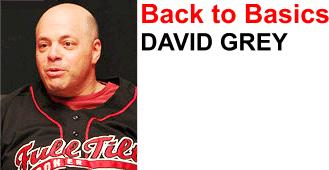
![]() There’s lots of choice when it comes to poker networks including the iPoker Network, Microgaming Poker, Chico Poker and WPN Poker Networks. Check out the latest poker room reviews or the online poker showdown before you decide where to play your next hand of poker.
There’s lots of choice when it comes to poker networks including the iPoker Network, Microgaming Poker, Chico Poker and WPN Poker Networks. Check out the latest poker room reviews or the online poker showdown before you decide where to play your next hand of poker.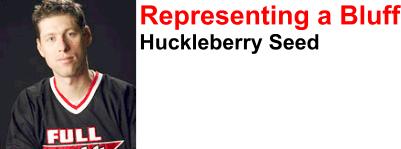


 If you’re USA-based, like Phil, you can play some great online at
If you’re USA-based, like Phil, you can play some great online at 

 Check out the latest reviews and ratings of popular online poker venues here at the Gooners Guide to Gambling
Check out the latest reviews and ratings of popular online poker venues here at the Gooners Guide to Gambling 
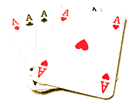 Solly asks:
Solly asks: